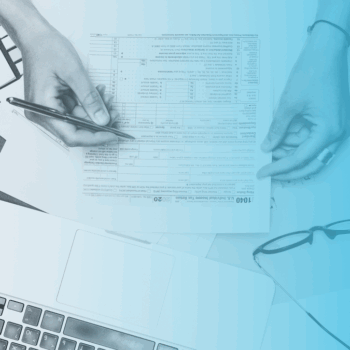Securing grant funding is not just about having a great project idea—it’s about effectively communicating that idea to align with the funding organization’s goals. Winning grant proposals act as a bridge between the potential of your project and the priorities of the funder, presenting a compelling case for why your project deserves support.
This article will guide you through the essential elements of crafting effective grant proposals, including how to structure your proposal, what key details to include, and how to ensure your proposal resonates with the funder’s objectives.
By mastering these elements, you can enhance your ability to secure funding and bring your project visions to life.
Nonprofit Resources
The Charity Charge resource hub is dedicated to providing tips, tools, and information to help your nonprofit create and grow a modern organization. Learn more
How to Write Winning Grant Proposals: Tips and Techniques
1. Understand the Funder’s Objectives
Before you start writing, it’s crucial to thoroughly understand what the funder is looking for. Review the funder’s mission and past funded projects to gauge their priorities and interests.
This knowledge will help you tailor your proposal to clearly align with their goals, increasing your chances of success. Delve into the specific criteria that the funder uses to evaluate grant proposals and look for any strategic themes or focus areas emphasized in their recent grant cycles.
Engaging with the funder’s published materials, such as annual reports or strategic plans, can also provide deeper insights into their long-term objectives and how they measure impact.
By aligning your proposal with these insights, you not only demonstrate your project’s relevance but also show your commitment to contributing to the funder’s overarching goals, significantly strengthening your grant proposals.
2. Structure Your Proposal Clearly

A well-structured proposal makes a strong first impression. Most grant proposals include the following sections:
- Executive Summary: A concise overview of your project that includes the need for the project, the expected outcomes, and the amount of funding requested.
- Statement of Need: Why the project is necessary and what issues it seeks to address.
- Project Description: Detailed outline of the project including goals, timeline, and activities.
- Budget: An itemized list of how funds will be used.
- Organization Information: Background information that establishes credibility and capacity to complete the project.
- Conclusion: Briefly recap the proposal’s key points, reinforcing the project’s importance and your organization’s capacity to successfully implement it.
3. Focus on the Need
Your proposal should clearly articulate the problem or need your project addresses. Use data and research to back up your statements and show the funder why this issue is important.
This section should evoke a sense of urgency and demonstrate that your project can effectively address this need. Be sure to present a compelling narrative that connects the need to real-world impacts, illustrating the consequences of inaction and the benefits of timely intervention.
Detailing the specific populations or ecosystems affected and citing recent studies or statistics not only validates the significance of the need but also positions your organization as well-informed and capable of handling the challenge.
Furthermore, by articulating a clear, direct connection between the funder’s objectives and your project’s aims, you enhance the relevance of your grant proposals, making it more compelling to the decision-makers.
4. Define Clear Goals and Objectives

Clearly state what your project intends to achieve. Goals should be broad, long-term aims, and objectives should be narrow, specific, and measurable. This clarity helps the funder understand your project’s scope and the specific outcomes you aim to achieve, which makes your grant proposals more compelling.
5. Develop a Detailed Project Plan
This is where you outline how you intend to achieve your objectives. Include a timeline, the specific activities to be completed, and who will be responsible for each activity. This section should convey a realistic and well-thought-out plan that instills confidence in your ability to manage the project.
Elaborate on the resources you will need, including any tools, technologies, or support services that are essential to project execution. Additionally, delineate the milestones you expect to reach throughout the project duration, providing clear markers of progress that align with your goals.
This level of detail not only demonstrates your thorough preparation but also reassures the funder that your organization has the competence and foresight to navigate any challenges that may arise.
By presenting a robust, actionable plan, you effectively communicate your commitment to making the project a success and your accountability in using the funder’s resources responsibly.
6. Include a Comprehensive Budget

The budget should be detailed, realistic, and justified. It should clearly align with your project activities and reflect a prudent use of funds. Be sure to include a narrative that explains each budget item. This transparency helps build trust with the funder.
7. Make Your Case Compelling
Use persuasive language to make your case. While your grant proposals should be based on facts and evidence, remember that conveying a compelling story can also capture the funder’s interest.
Show how your project will change lives, improve systems, or transform communities. Incorporate testimonials or case studies from past initiatives that demonstrate your organization’s impact and expertise.
These narratives can humanize your data, giving a face and a story to the numbers and making the outcomes of your proposed work more relatable and tangible.
Moreover, explain the broader implications of your project: discuss how the changes you propose will lead to significant societal, environmental, or economic benefits.
This approach helps the funder visualize the ripple effects of their investment, further solidifying the value and urgency of your proposal.
By intertwining factual data with emotive storytelling, you can engage the funder on both intellectual and emotional levels, making a memorable and persuasive case for your project.
8. Revise and Proofread

Grant proposals that are well-written and error-free reflect your organization’s professionalism and attention to detail. Before submitting, revise your proposal several times and have it proofread by someone who can provide a fresh perspective.
9. Follow Submission Guidelines
Carefully review the submission guidelines provided by the funder. Adhering to these guidelines is crucial as failure to do so can lead to your proposal being disqualified before it is even reviewed.
Crafting winning grant proposals is a crucial skill that can significantly impact your organization’s ability to fund and execute projects. By aligning your proposal with funder priorities, articulating a clear need, and detailing a sound project plan and budget, you increase your chances of success.
Remember, the key to effective grant writing is not just in following a template but in understanding how to tell your project’s story in a way that engages funders and clearly shows the value of your work.
As you apply these tips and refine your approach, each proposal becomes an opportunity to learn and improve, enhancing your ability to secure funding and make a meaningful difference in your community and beyond.





